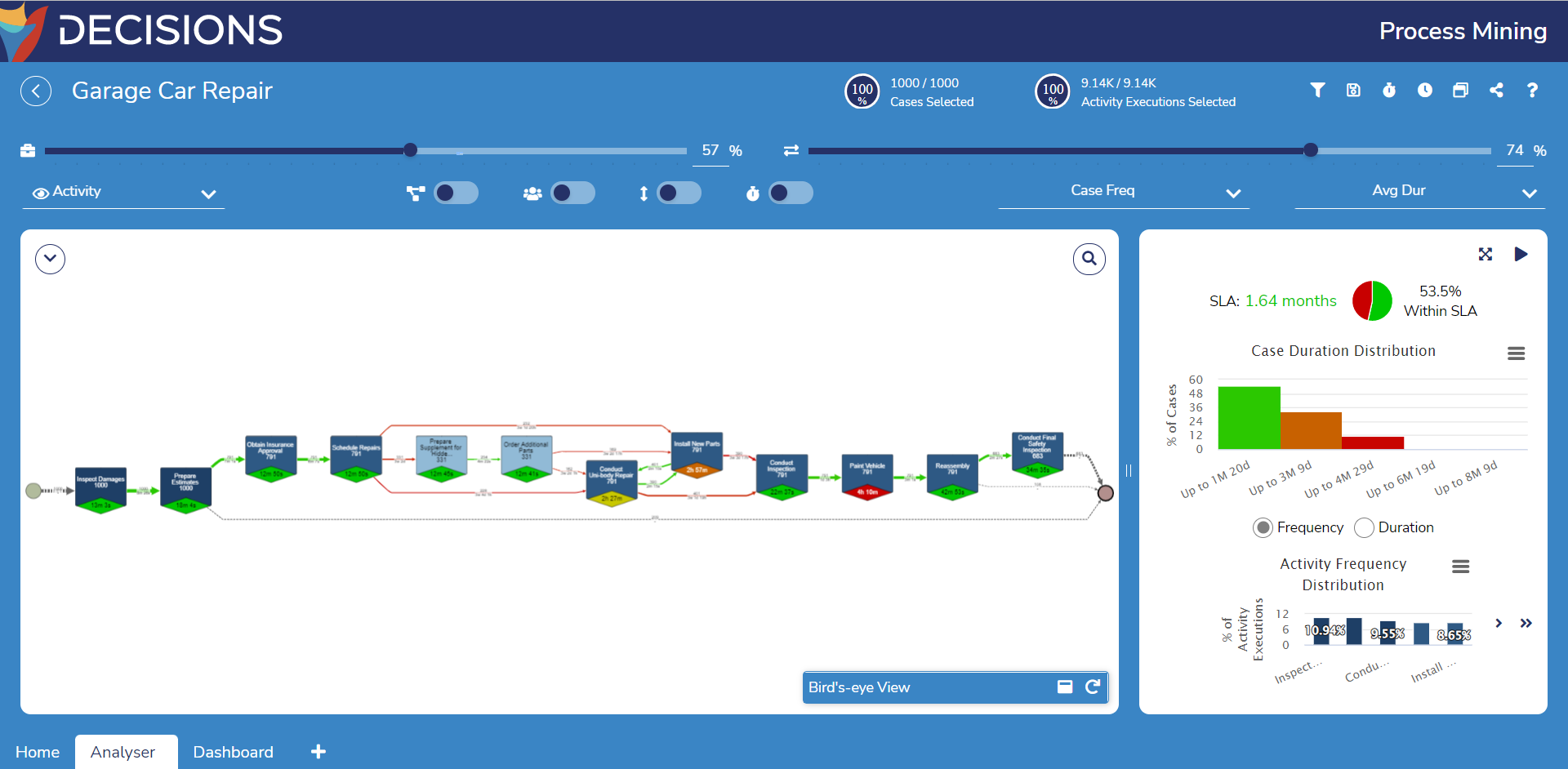Overview
Process mining technology transforms event logs into a process map capable of providing insights to better monitor and improve processes through identifying variants, rework patterns, and bottlenecks based on true data.

Process mining provides results that are:
- Objective: Process mining removes human error thus empowering organizations with unbiased, as-is process data.
- Fast: With a scalable algorithm, process mining quickly analyzes years of process execution data quickly, thus expediting process discovery, process performance analysis, and regulatory compliance checking
- Complete: Every past execution of the analyzed process, regardless of its frequency, is completely represented.
Common use cases of process mining include discovering the actual process versus the modeled process, simulating the results in a potential process change, and monitoring a process’s efficiency and compliance.
Benefits
A clear path towards improvement within a process starts with identifying the present process by listing information such as which activities are performed, when, by whom, and in which order.
Furthermore, the discovered process may monitor process-specific key performance indicators as well as regulatory compliance rules to predict violations. This allows organizations to take quick remedial actions against any violating and conflicting process behaviors.
Enhancements and/or fixes may be simulated to estimate the costs, time, and quality of the suggested solution before implementation.
In addition, Process mining enables business leaders and decision-makers to:
- Analyze interactions and working habits of various teams and individuals
- Identify products or services that are the root cause of congested and/or undesired extra work
- Eliminate waste by reducing process execution variability thus increasing standardization and efficacy
Available Process Mining Features
Decisions Process Mining comprises of the following features :